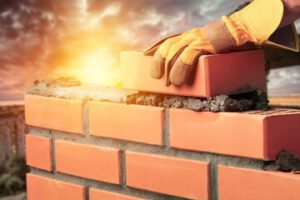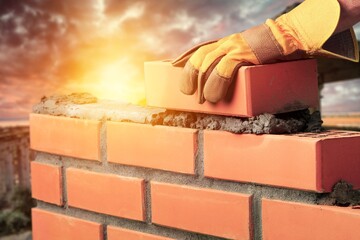Masonry is a group of men who believe honesty, charity, compassion, love, and trust are important. Masons also believe in education and that we must continue to grow as individuals. Charleston Masonry is a construction method using brick, stone or concrete blocks. A masonry wall can be structural (as in a foundation) or a decorative veneer.
 Brick is an important construction material used in masonry. It comes in a variety of sizes, shapes and materials. It can be used for structural as well as decorative purposes. Different types of bricks are based on their properties, such as durability, water and fire resistance. Using the right kind of bricks for a specific purpose is crucial to ensure the success of any construction project.
Brick is an important construction material used in masonry. It comes in a variety of sizes, shapes and materials. It can be used for structural as well as decorative purposes. Different types of bricks are based on their properties, such as durability, water and fire resistance. Using the right kind of bricks for a specific purpose is crucial to ensure the success of any construction project.
The most common brick is clay, which can be molded, dried and fired. Some bricks are unfired and dry, referred to as sun-dried or unburnt bricks. These bricks are usually less durable and have a lower fire rating than burnt ones. Generally, unburnt bricks are only suitable for temporary structures such as garden walls.
Most modern bricks are kiln-fired, though some are chemically set and not kiln-fired. Chemically set bricks are made from a mix of calcium, sand and flint, which is then pressed into molds and left to cure for several hours. Some bricks are hand-molded, while others are machine-molded. There are also various types of firing, such as gas and wood firing.
Thousands of different bricks are available, each with a unique size, forming method, origin, quality and texture. For example, a modular brick has an actual dimension of 225 mm lengthwise by 102.5 mm wide and 75 mm heightwise. This is convenient when laying bricks, because it allows for a standard mortar joint of 3/8 inch.
Some bricks are molded by hand, while others are molded and cut by machine. The molded bricks are then fired in large kilns to give them their standard shape and strength. First class bricks have a uniform shape and sharp edges, and are more expensive than other classes of brick.
Bricks can be arranged in a variety of ways to form walls, sidewalks and other structures. Masons build the brick walls by joining them with mortar. Bricks can be laid in different patterns, but the most common pattern is called running bond. Each row of bricks in a wall is known as a course.
Stone
Stones are available in a wide range of textures, shapes, and sizes. They can be used for both decorative and weight-bearing purposes in masonry. The type of material used and the quality of workmanship will determine the beauty of a building. Masonry can be constructed using many types of stones, including limestone, granite, and sandstone. A mason must know how to cut, carve, and fit these pieces together for a finished product.
In stone masonry, the stone blocks are arranged in regular courses. Their heights should not be the same in any course, and the exposed faces are hammer-dressed to give them a rock-faced appearance. The beds and joints are also chisel-dressed to ensure that all waviness and unevenness are eliminated. The face that remains exposed should be a minimum of 1 mm from a straight edge placed on the surface in any direction.
Unlike brick or concrete block masonry, stone structures do not require movement joints. The lime mortar joints are flexible enough to allow for expansion and contraction of the stones without cracking. They also act as a damper, slowing the rate of temperature change in the wall. For modern construction, however, the use of formal movement joints is recommended.
In addition to its durability and beauty, stone masonry is also easy to maintain. It doesn’t absorb much water, and it resists weathering better than other types of materials. Its natural insulating properties and strength make it an ideal choice for cold climates.
It is important to keep in mind that the longevity of a stone masonry structure depends on several factors, such as the stone’s natural composition, stratification, and construction methods. It is therefore important to select the best stone for your project and to follow good construction practices. These include a thorough survey of the site, a careful selection of materials, and adequate protection during construction. Moreover, stone masons must protect the walls from sunlight and rain, as these can damage the mortar. In the end, it all comes down to preference and what kind of look you want for your home.
Concrete
Concrete is the most common masonry material in buildings. It is used to construct walls, foundations, patios and sidewalks. Concrete blocks and bricks are manufactured in a variety of shapes and sizes for specific uses. Concrete is a non-toxic, environmentally friendly building material that is durable and resists damage from fire and water. It is also resistant to termites and rusting, making it suitable for coastal areas.
Concrete masonry is less expensive than stone, but it still requires a high level of skill to construct. Its uniform shape and size reduce labor costs compared to laying individual clay bricks. Masonry concrete walls are stronger and more stable than brick structures. They are less susceptible to seismic damage, but they do not have as much resistance to tension and torsion loads. Concrete block walls have a lower moisture tolerance than stone masonry, and are less insulated than wooden studs. Openings for doors and windows must be carefully fitted to avoid structural problems.
Masonry construction is a time-consuming and labour-intensive process. The materials must be properly stored and protected from weather damage to prevent deterioration and cracking. Masonry construction cannot be done in heavy rain or freezing conditions, since the mortar will lose strength. It is important to have good project planning and adequate manpower to handle the large number of blocks and bricks involved in a masonry project.
Using masonry to build structures makes environmental sense. It uses recycled materials and is usually manufactured locally. This limits the amount of transportation and fuel needed to reach the construction site. These factors can help earn a green rating for the building. In addition, the thermal mass of masonry walls helps moderate indoor temperatures and reduces energy consumption. This can result in significant savings on utility bills. The lack of wood in masonry construction is also ecologically sound, since it eliminates the need for wood-based fire-stopping products and prevents the spread of termites and white ants.
Mortar
Mortar is a workable paste that binds the blocks of masonry and helps them to set and stay together. It is a mixture of sand, a binder such as cement or lime, and water. It is used to join bricks, concrete block, stone, and other masonry units during construction. It is also used to repair existing masonry, such as when repointing mortar joints. The quality of a mortar mix depends on the type and quantity of each component. The binding material must be strong enough to hold the masonry units and resist stress, abrasion, and chemical attack. It should also be able to withstand weather conditions, including temperature and moisture changes.
The plastic consistency of a mortar must be easy to spread with a trowel. This is important for masons because it allows them to apply a continuous coat of mortar and achieve a smooth, even surface. In addition, a workable mortar will adhere to vertical surfaces during unit handling and placement; will maintain alignment as other units are positioned; and will provide a watertight, closed joint when tooled. The mason must consider all of these factors when selecting a mortar for a particular job.
Different types of masonry mortar are used for different applications. For example, repointing mortar is typically used to repair joints and gaps in brick walls. It is often mixed with water and applied with a trowel to make it thicker, which allows it to fill cracks in older masonry. A variety of mortar mixes are available, and they are typically sold in bags or in dry pre-mixed form that the mason adds to water on-site.
A good mortar mix will contain a sufficient amount of cement and well-graded fine aggregate. The proportions of these materials must be carefully controlled to ensure that the mortar meets the physical requirements designated in ASTM C270. Adding too much or too little water to the mix can reduce its strength and durability. During mixing, the mason must ensure that the mortar mix is thoroughly blended to eliminate airborne dust. It is also important to add water slowly and gradually, to avoid making the mortar too wet or too dry.

